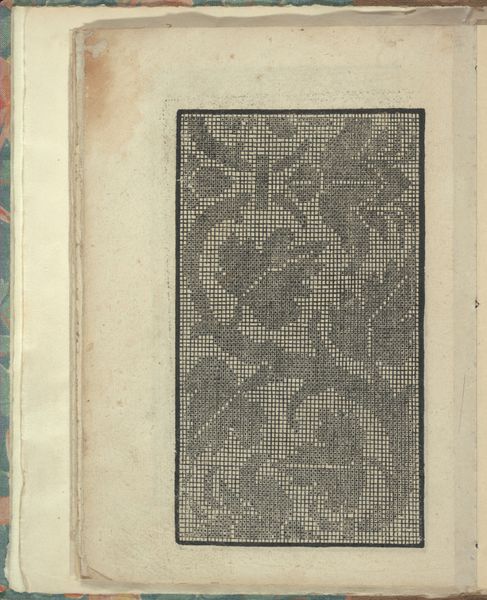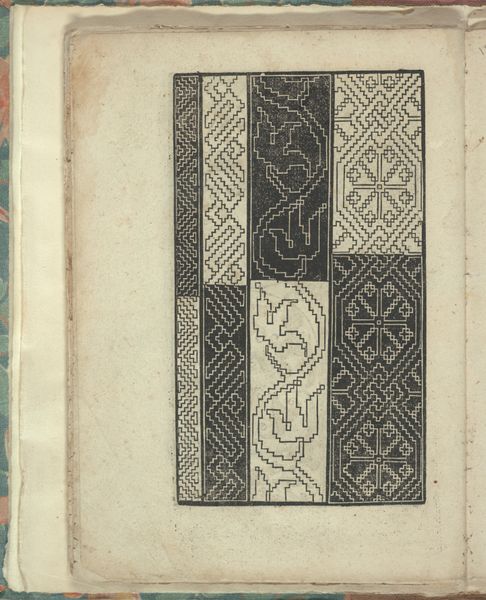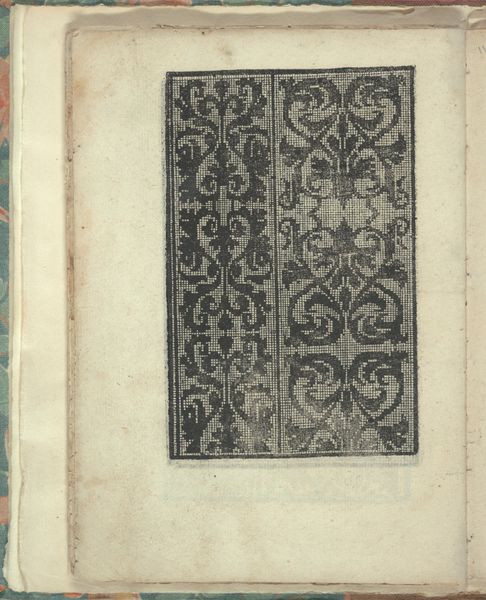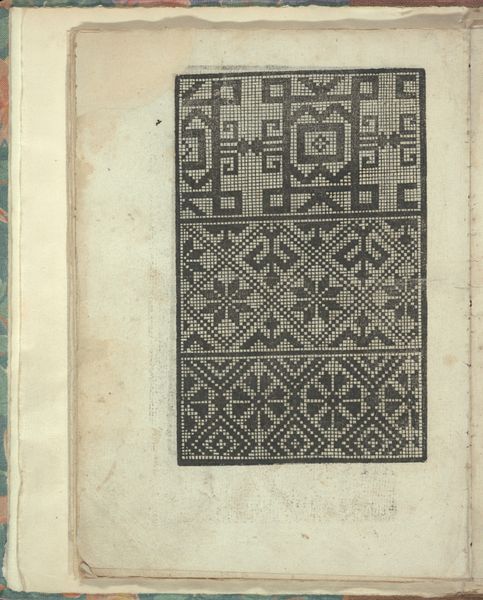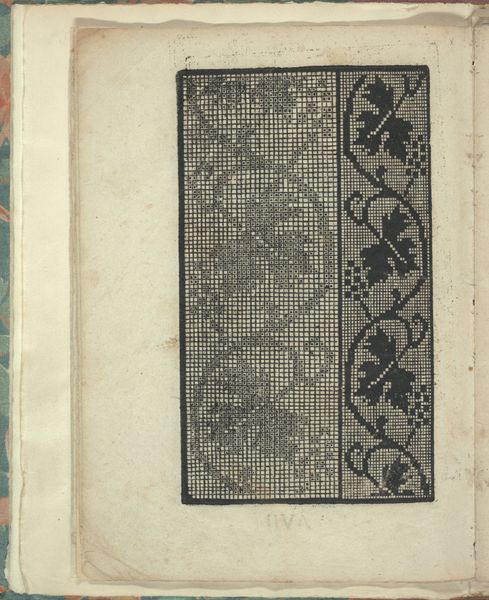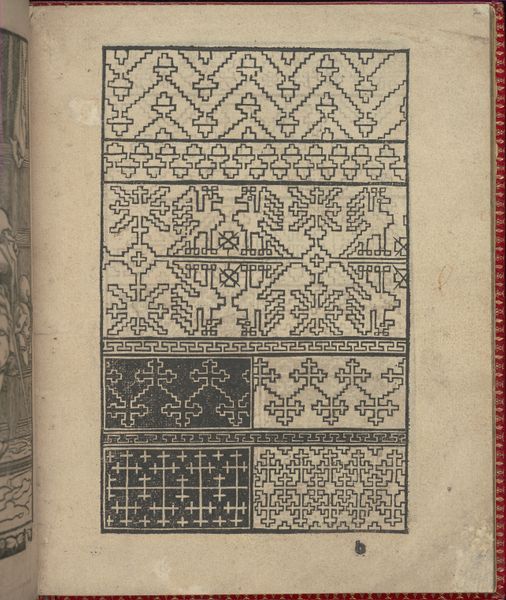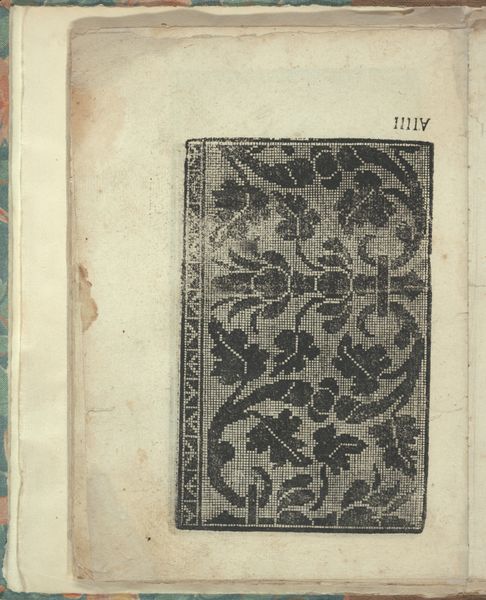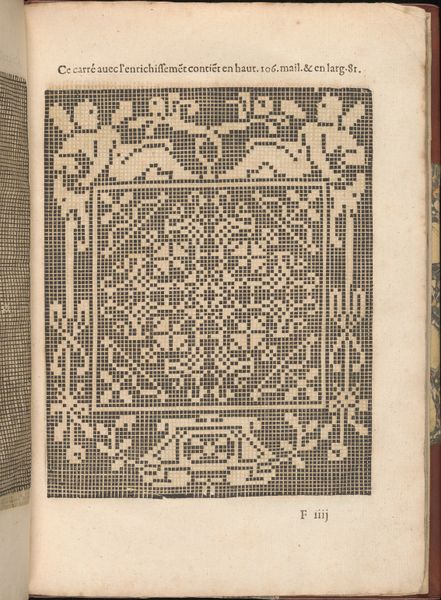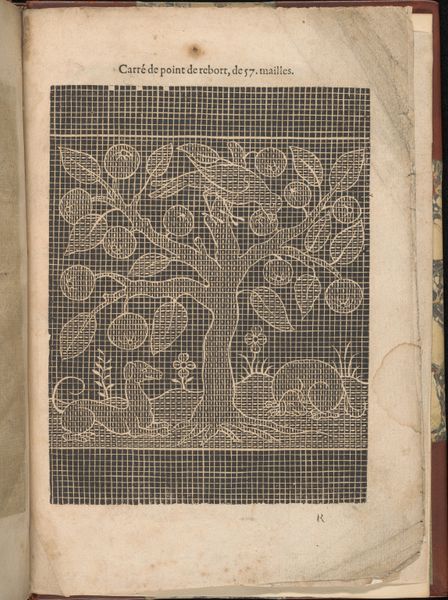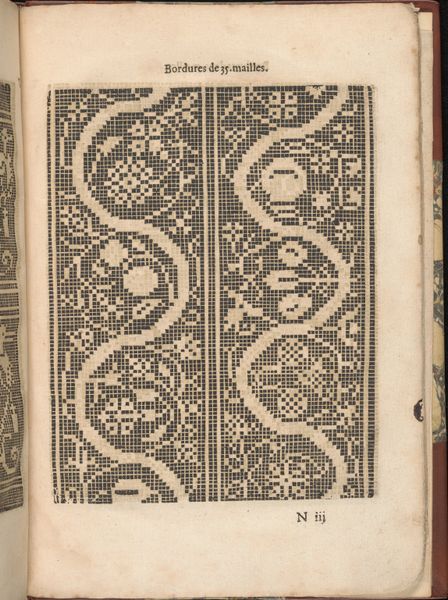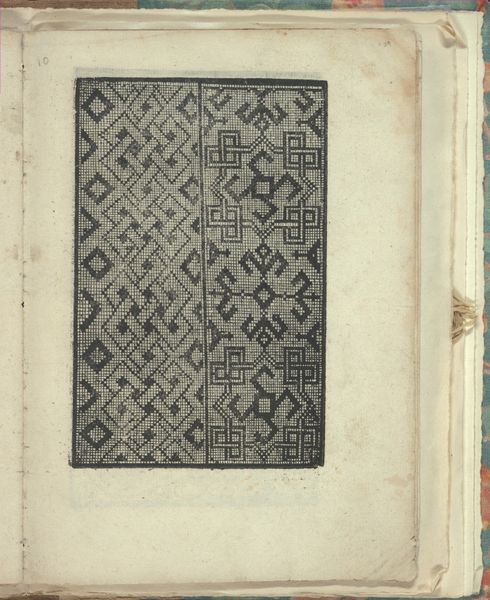
Opera Nova Universali intitulata Corona di racammi, page 35 (verso) 1530
0:00
0:00
drawing, ornament, print
#
drawing
#
ornament
# print
#
book
#
11_renaissance
#
geometric
#
italian-renaissance
Dimensions: Overall: 8 7/8 x 6 7/8 in. (22.5 x 17.5 cm)
Copyright: Public Domain
Curator: Here we have a page from Giovanni Andrea Vavassore’s "Opera Nova Universali intitulata Corona di racammi," a print dating back to 1530. This particular example is housed here at the Metropolitan Museum of Art. Editor: My initial thought is just how incredibly dense and intricate these patterns are. It's almost dizzying to look at. They feel very contained and architectural, perhaps meant to suggest a woven grid of some kind. Curator: Indeed! These books were pattern books, essentially design templates for lacemakers and embroiderers during the Renaissance. They served a vital role in disseminating new styles and techniques across Europe. It allowed the industry of embroidery to flourish in many sectors of the society. Editor: So it’s essentially functional art, or even…industrial design, of a sort. This raises the question: How much of the aesthetic pleasure did consumers get out of the finished embroidery versus the process of actually making the art using Vavassore's patterns? It speaks to a world where skilled handwork held enormous social and material value. Curator: Absolutely. Consider the implications for women's education and economic empowerment, for instance. Embroidery was often a highly valued skill. This book would have been a tool for enhancing women's status within their social strata. Editor: And think about the labor involved in creating both the original designs and then replicating them. This object collapses the distinctions between high art and craft by foregrounding the intensive process of making itself. Curator: Furthermore, the book itself – its production, circulation, and consumption – reflects the social and economic changes sweeping through Europe at the time: increased trade, urbanization, and a growing merchant class eager for fashionable goods. The printing press made all this possible. Editor: I'm left contemplating the countless hands and hours devoted to recreating these precise geometries. A real testimony to human ingenuity and toil, presented here in the form of patterns and art. Curator: Agreed. This book provides a window into the complex interplay of art, craft, commerce, and social structures that defined the Renaissance.
Comments
No comments
Be the first to comment and join the conversation on the ultimate creative platform.
